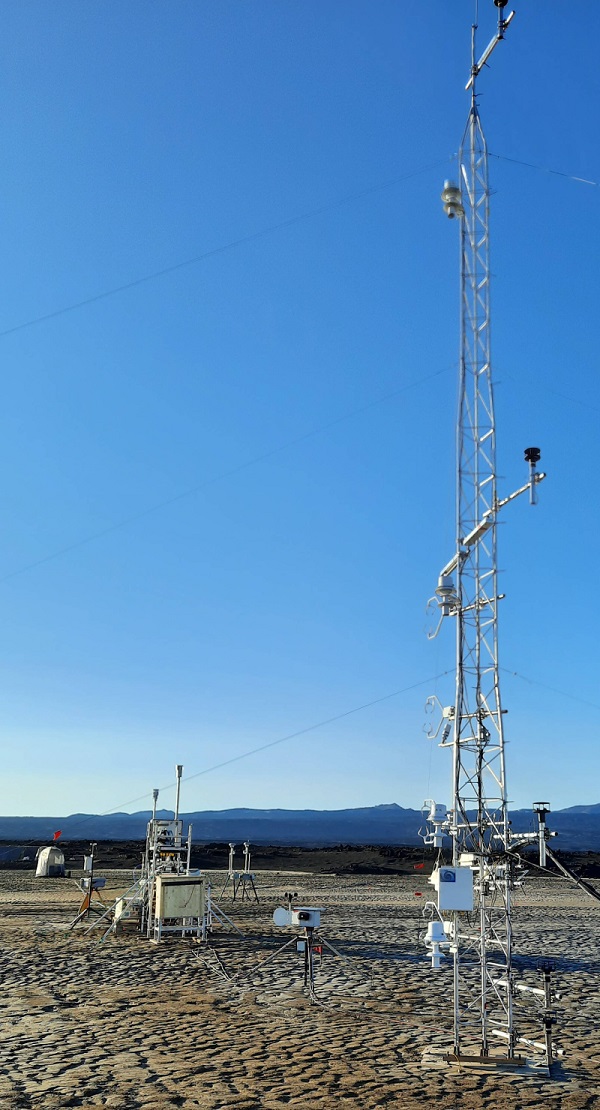Dust from a cold desert
Dust source regions at high latitudes (i.e. ≥ 40 - 50°N/S), such as in Canada, Iceland, Patagonia, or New Zealand, are not as famous as their lower latitude counterparts, e.g. deserts in northern Africa, the Middle East, or Asia. Nevertheless, high-latitude dust source regions are increasingly recognized as being of regional and global importance, for example through transport of dust to the Arctic/Antarctic where it can affect cloud formation and where deposited dust can affect glacier melt and oceanic carbon uptake.

in the desert Dyngjusandur, Iceland
Dust emission and transport in the Icelandic highlands is now investigated in a field campaign using detailed measurements of surface sediment, airborne dust, and meteorological conditions directly where dust is emitted. This field campaign is conducted by an international team of around 25 researchers in different projects, e.g. FRAGMENT funded by the European Research Council, HiLDA funded by the German Research Foundation, and IMK-TRO’s Young Investigator Group on Mineral Dust funded by the Helmholtz Association’s Initiative and Networking Fund (list of participating institutions below). The main goals of the campaign are to better understand the emission of dust particles depending on their size and composition, transport pathways across Iceland and beyond, and impacts.
Due to its volcanic and glacial origin, dust in Iceland differs in its properties to dust from other deserts. In particular large dust particles are likely more porous and of different shape. “This is of particular interest for us, as we would like to understand how particularly the large particles are emitted and transported, and how they impact cloud formation”, says Dr. Martina Klose, head of the research group “Mineral Dust” at IMK-TRO and FRAGMENT collaborator. “Our Icelandic dust measurements will therefore constitute an excellent contrast to previous measurements and will help us to challenge our understanding of how dust emission and transport works and how it can be described in models.” The potential of Icelandic dust particles to act as ice nuclei and promote cloud formation will be investigated in collaboration with colleagues at IMK-AAF.
The field campaign takes place in August and early September 2021 in the desert of Dyngjusandur, Iceland.

Participating institutions:
Technical University Darmstadt, Freie Universität Berlin and Karlsruhe Institute of Technology (KIT) in Germany; Barcelona Supercomputing Center (BSC), Catalan Institution for Research and Advanced Studies (ICREA), and Environmental Assessment and Water Research – Spanish Research Council (IDAEA-CSIC) in Spain; California Institute of Technology (Caltech) and NASA Jet Propulsion Laboratory (JPL) in the US; National Research Institute for Agriculture, Food and Environment (INRAE) in France; the Agricultural University of Iceland and Czech University of Life Sciences Prague.
Working group: Young Investigator Group Mineral Dust / Martina Klose and Hannah Meyer
